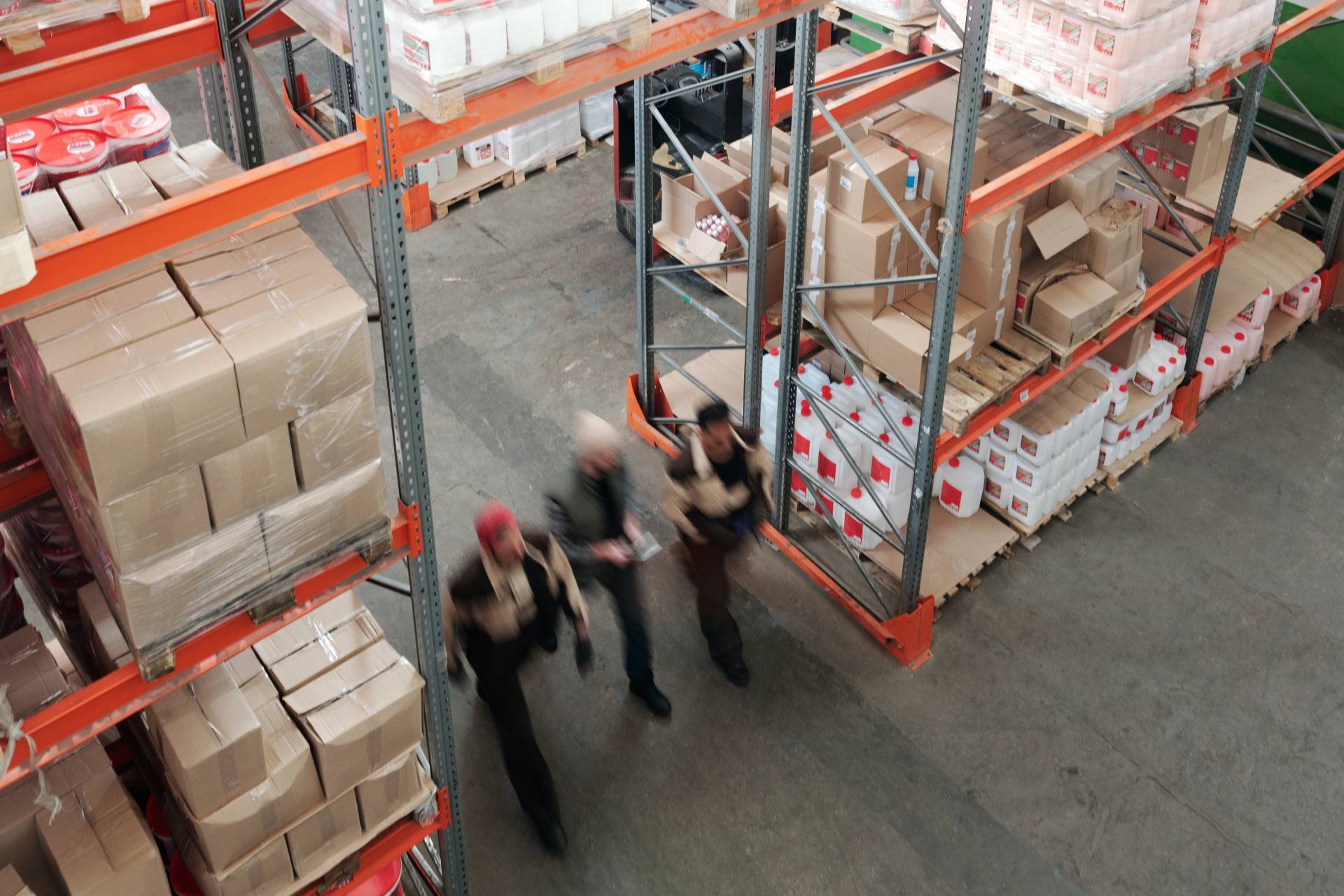Warehouse Logistics: Main Tasks and Processes
Warehouse logistics is an important component of the e-commerce supply chain. It includes all activities related to the storage and movement of goods in a warehouse, from the receipt of inventory to shipment. E-commerce companies using Rakuten Benefit from organized warehouse logistics by saving employees time, getting goods and services to market faster, and reducing warehouse operations costs.
Understanding warehouse logistics is critical to maximizing warehouse space, as a warehouse is needed to regulate the flow of existing inventory between supply and demand.
What is Warehouse Logistics?
Warehouse logistics is a mixture of two terms: warehouse and logistics. While warehousing is the actual storage of inventory for sale or distribution, logistics is the element of the supply chain that deals with planning, executing and managing the movement of products and services between source and destination.
The main tasks of warehouse logistics
The ultimate goal of warehouse logistics is to provide a reliable system while maintaining low operating costs while providing high quality services. This is usually a combination of the following:
- Satisfying the marketing requirements of e-commerce enterprises through supply chain management
- Meeting customer demand based on production, raw materials, labor availability and market trends
- Reducing operating costs without sacrificing service quality
- Maximize storage space through inventory management
- Ensure proper organization of warehouse staff and crew
- Building inventory in anticipation of customer needs
- Preservation of basic security measures to improve warehouse logistics and protect the quality and integrity of stored products.
So, to achieve these goals, logistics managers work in all areas of warehouse logistics.
Warehouse Logistics Operations and Areas of Work
Receipt and storage of inventory, packaging of goods according to orders, and shipment of goods to distribution centers are all aspects of warehouse logistics. To ensure the effectiveness of each of these operations, it is important to improve warehouse logistics, taking into account the following main areas of work:
Warehouse Plan
The first step in building your warehouse and ensuring efficient warehouse management is planning your warehouse layout. The technique will differ depending on whether you are building a new facility or redesigning an existing building. This design will be influenced by several key elements, including:
- Inventory volume and inventory control
- Material flows and turnover in the warehouse
- Free space and exact location
- Composition of the working group, organization and qualifications
- Corporate governance system and whether a warehouse management system is in use
- In addition, you must consider existing storage systems and handling equipment when renovating your current plan.
The layout design process should always begin with a thorough study of your company’s requirements. As a basis for warehouse logistics, consider it in the long term, anticipating the development potential of the plant.
Materials Management and Storage Systems
In addition, material management or procedures related to the identification, storage and movement of physical goods is the next key area of work in warehouse logistics. Industrial shelving is used for storage in most warehouses. Indeed, the appropriate storage system is determined by the store’s inventory, product type, unit load, and related costs.
In addition to storage, material management includes various material handling equipment, which greatly affects the smooth operation. Automated systems controlled by software or human controlled devices such as classic forklifts and pallet trucks control the equipment.
Order Picking and Preparation
The specific tactics of warehouse logistics largely depend on picking operations. These include moving and retrieving products from racks, sorting orders, consolidating, packing and shipping.
In addition, one of the most important aspects of warehouse logistics is the organization of the process of picking and fulfilling orders. There are several methods based on the following factors.
- Floor, medium, low or height of the racks from which items are selected
- Movement of goods: whether the operator travels to the goods at distribution points or the goods arrive at the operator through automated systems.
- Picking methods for various items include batch picking, order by order, wave zone, or pick to cart.
Inventory and Inventory Management
Stocks and inventory control focused on maximizing the inventory level of the facility. Modern warehouses use software to get real-time information about the volume of finished goods in the warehouse.
Warehouse management systems (WMS) interact with an enterprise resource planning (ERP) system to coordinate activities. WMS streamlines location assignment, picking operations, and other processes in addition to real-time inventory tracking and document management. Voice dialing and additional reading and data devices connect computer systems.
Warehouse security
Logistics workers and store goods are exposed to different risks in the course of everyday processes. This is why security is something you, as a business owner, cannot overlook when it comes to warehouse logistics. Work with him in three areas:
Prevention: Working in warehouses and distribution centers involves repetitive activities, physical weight transfer, product storage, prolonged standing and other occupational hazards. A tired operator is prone to human error and is less productive. It is a good idea to conduct an Occupational Safety Analysis (OSA) and provide workers with tools and automated systems that help them do their job more comfortably and ergonomically.
Goods security systems: The nature of the warehouse and the misuse of automatic systems and manual handling equipment can damage the plant and goods and endanger employees. It is recommended to post signs throughout the building, establish traffic rules, and develop best practices for equipment operation.
Maintenance: For safety reasons, it is also important to properly maintain installations and equipment. Make sure you regularly carry out a thorough technical inspection of your racks.
Logistics warehousing has its own set of organizational norms and specialized areas of work that are centered around a set of common goals. Knowing how to understand this discipline is challenging, especially in today’s world of logistics where unpredictability and changing purchasing patterns change management and processes.
We also advise you to improve the administration of your installation by consulting with specialists who can help with order fulfillment. This will reduce transportation costs, provide customers with more affordable shipping rates, and improve business income.






